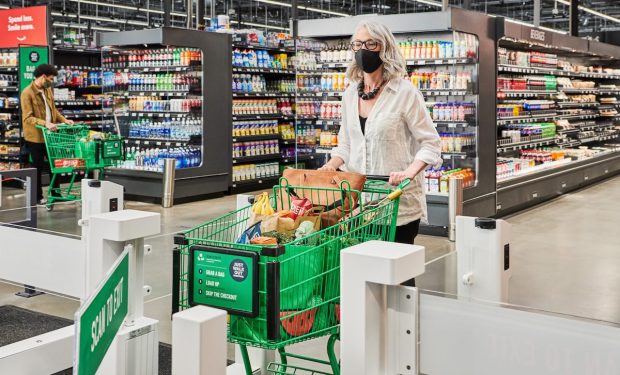JPMorgan Payments Says Invisible Payments Define Instant Checkout’s Future

Instant checkout has been a long time coming.
Go back a few decades, and Amazon had a patent in the 1990s on one-click checkout. The patent expired in 2017, and with one-click in the public domain, so to speak, the pain points of checking out have been lessened. At least online.
But not when it comes to in-person commerce.
Sanjay Saraf, global head of eCommerce and marketplaces at J.P. Morgan Payments, noted that not much has changed in the last 100 years, generally speaking, when it comes to physical retail.
Yes, there are some self-service options in brick-and-mortar settings, but the kiosks can be time-consuming to use. Most consumers are resigned to walking up to the terminal at the front of the store, waiting for the cashier to move them through, and the lines are still interminable.
Now, as the pandemic recedes, Saraf noted: “Omnichannel’s right here in front of us.” Buy online, pickup in-store (BOPIS) has fostered the expectation that checking out should be seamless and transparent — speedy too.
Ideally, the consumer should be able to begin a search online on their mobile device, carry that search into the in-store setting, find what they want and have that same device complete an invisible payment in the background that allows the consumer to walk out the door having had minimal human intervention in the mix.
The aspiration toward one-click checkout, on-premises, is readily understandable. No more lines result in fewer abandoned carts, and fewer abandoned carts result in more revenue, just as in the case with eCommerce.
Getting there is a complex undertaking. The expectation of invisible payments has only been reinforced by the emergence of platforms like Uber and Airbnb. More companies are finding that it’s to their advantage to have a multi-party setup, and digital wallets are gaining ground. Consumer technology created new expectations for frictionless commerce. Creating an end-to-end payments ecosystem has never been harder.
The fact remains that it’s difficult for merchants to deliver the seamless flow, a continuum that spans browsing and buying.
“The predominant friction point is for a merchant to recognize, understand and have a ‘footprint’ of that consumer,” he said.
Using Advanced Technologies and Personal Attributes
The “secret sauce,” he said, lies with providers (J.P. Morgan Payments among them) managing tokenized consumer credentials in a trusted manner that helps merchants identify consumers and the ways in which they want to pay.
At the heart of it all, he said, is the customer’s identity, which connects the payments, the preferences, the merchants and the individual that ultimately enables instant checkout.
Artificial intelligence and machine learning can and will inject instant ways to ascertain that consumers are who they say they are. J.P. Morgan Payments, for its part, is also examining ways to enable a “wallet type of structure” that makes it easier to move money between sellers and consumers’ accounts in true account-to-account fashion.
Looking ahead, there will be a need for some fine-tuning.
“Merchants will have to be very careful about how they’ll introduce the notion of one-click checkout,” observed Saraf.
He offered the example in which a consumer might be fine with seamlessly/instantly checking out with a $15 purchase but would balk when the purchase runs into the thousands of dollars.
With the confluence of those advanced technologies that can enable frictionless commerce and simplify cross-channel payments, “we’re creating this ecosystem, from a checkout perspective, that engages the consumer, but is also compelling for the merchant,” he said.

